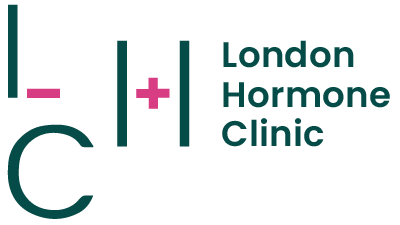The Perimenopause, Or Is It?
Hitting forty is a milestone moment for us all. Something to be celebrated, yes. But, for many women also a decade to be feared. Why? Because forty is seen as the beginning of the end, the start of perimenopause, and the onset of a whole heap of ghastly symptoms we have little - or no - control over.
Pick up any women’s magazine, scroll through social media, or listen into coffee shop conversations, and you are sure to see and hear women in their thirties and forties self-diagnosing. But in many cases the anger, hot flushes, bloating, and weight gain have nothing at all to do with perimenopause.
When it comes to hormones, forty really is a turning point. Hormone levels fluctuate – a lot – and what happens one month is unlikely to be repeated the next. Sleep deteriorates, hot flushes start, and women feel irritable and overwhelmed. Add to this weight gain, worsening PMS, and heavy periods and it’s clear to see why so many modern women believe they are perimenopausal.
But they aren’t
How do we know?
If we tested the bloods of these women – and this doesn’t routinely happen because GPs don’t offer this – we would see a high level of oestrogen, a low level of progesterone, and a low or normal level of follicle stimulating hormone (FSH). The key thing here is the high level of oestrogen and the low FSH level. These two things combined show that a woman is not perimenopausal. To be perimenopausal, her levels of oestrogen would have to be falling, or even really high as levels fluctuate, and her levels of progesterone would be low or non-existent. When women hear this, they often don’t believe it, such is the modern-day hype, confusion, and misinformation about this life stage.
What’s really going on?
The cause of all of these symptoms is not perimenopause, but low progesterone. You see progesterone is a wonder hormone that does a huge number of things in the body. It improves energy and stamina, burns fat, normalises blood sugar, improves cholesterol, helps with bone building, supports thyroid function, and is a natural diuretic and antidepressant. And that’s not all, the list goes on and on. So, you can see why, when levels of progesterone are low, women really don’t feel like themselves.
Levels of progesterone are the first to decline in women, usually from the age of around thirty-five and way before levels of oestrogen. When you understand this, and the role progesterone plays, it’s much easier to see why your forty-something symptoms may be very different to your friends’, and why even your own experience may vary hugely from month to month.
Nowhere to turn
You may be wondering why you’ve barely heard of a ‘low progesterone’ diagnosis, when women all around you seem to be being told (by their family, friends, medical professionals, and even strangers in the street) that they are perimenopausal. The answer is simple: there are very few places women can go to at forty, to get an understanding of, and treatment for, hormonal imbalance.
Instead, what usually happens is women either go to their GP only to be turned away empty-handed or with HRT, sleeping tablets and/or antidepressants. None of which are the answer. Or they simply, in a stoic manner, ‘put up and shut up’ – wrongly believing that this is something they are just going to have to get through.
You’re not going crazy
We hear time and time again from women who, having finally been diagnosed and treated, say they lived in fear for years, thinking they were going crazy, were clinically depressed, or seriously ill. And, despite more and more women sharing their experiences, levels of anxiety and confusion still reign high. Women are not crazy, but a system which allows such unnecessary levels of suffering absolutely is.
A simple solution
A capsule, melt, lozenge, or vaginal pessary is all it takes to alleviate memory loss, feelings of overwhelm, hot flushes, night sweats, mood swings, acne, and weight gain. All the symptoms that low progesterone brings in fact. By simply restoring the levels of the depleted hormone women start to feel ‘normal’ again, and what’s more, doing this serves a dual purpose as it promotes long-term brain and heart health, and helps to prevent breast and ovarian cancers.
The crazy thing is…
Despite all of this, women are still suffering in silence or being turned away by medical professionals. They are still being prescribed HRT which contains oestrogen, a hormone they absolutely don’t need and because of that, makes their symptoms even worse. And they are still choosing to confide in their friends, make light of their issues, and live in fear of what is to come. Why? Because for too long, amongst this group of women, perimenopause has stolen the show and put progesterone in the shade. That needs to change. The first step is to educate and inform, so when your friends tell you they can’t remember their own name, they feel bloated or have suddenly developed bad spots, offer up this alternative solution. The more of us who do this, the easier life will become and women can focus on having fun at forty, instead of living in fear.

